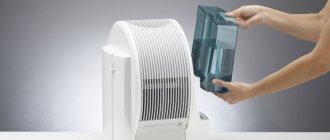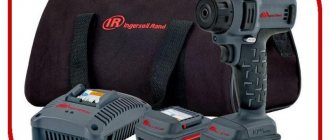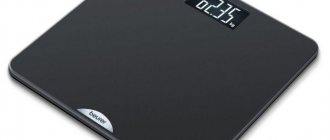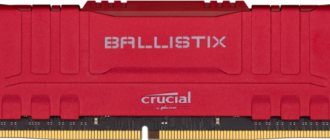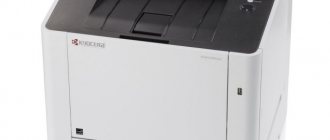The advent of SSDs has shaken the monopoly of hard drives. Most laptops today come with solid-state drives.
At the same time, it is still too early to write off classic hard drives; in some cases, installing an HDD is preferable and more profitable.
If you are in a hurry and want to immediately find out the best offers in each rating category from different online stores , you can familiarize yourself with the table and see the current prices on the Yandex.Market service by clicking on the “find out price” button in the table opposite the model.
Rating of the TOP 8 best hard drives (HDD) for a laptop
| Place | Model | Price |
| The best hard drives for a 500 GB laptop | ||
| #1 | Western Digital WD5000LPLX | |
| #2 | Seagate 500 GB ST500LM021 | |
| #3 | Toshiba 500 GB HDWK105UZSVA | |
| The best 1000 GB models | ||
| #1 | Western Digital WD10SPZX | |
| #2 | Toshiba 1TB HDWL110UZSVA | |
| #3 | Western Digital WD10SPCX | |
| The best HDDs for a 2000 GB laptop | ||
| #1 | Western Digital WD20SPZX | |
| #2 | Toshiba 2 TB HDWL120UZSVA | |
Page navigation:
Average waiting time
The read head needs a short period of time to move to the desired sector above the surface of the magnetic disk. This causes minor delays when writing and reading data. A modern HDD has a latency range from 7 to 40 milliseconds.
Because of this feature, you should periodically defragment the contents of the drive - collect “in a heap” scattered data that is scattered across the entire magnetic surface, but which belongs to one file or library. Constantly moving to read a file split into several parts reduces the performance of the computer.
Recommendations for choosing a laptop hard drive
Important! Laptops support 2.5 inch internal HDDs. In addition, when choosing, you should pay attention to the following points:
- Connection interface. The ancient IDE remains only in very old devices. Modern laptops are equipped with a SATA connector, most often the third version. A hard drive with SATA 3 will also work in a laptop with SATA 2 support, but at a reduced speed.
- Rotational speed. The most common discs are with 5400 and 7200 rpm (revolutions per minute). The higher the spindle spin, the faster the disk works. But high-speed HDDs make a lot of noise, heat up and are expensive.
- Disk space volume. HDD capacity for laptops can vary widely, starting from 256 GB. The minimum option is suitable for installing an operating system, installing programs and storing a relatively small amount of user data. The best option for a laptop would be to purchase a HDD from 500 GB to 2 TB for all needs.
- Read/write speed. The higher this parameter, the faster the OS will load, launch programs, copy and move files. Manufacturers do not always indicate such data, but the results of independent tests for a specific model are available on the Internet.
- Cache memory size. The larger the cache buffer, the better. This parameter has a positive effect on overall performance.
Varieties
It is logical to start choosing a suitable hard drive for your laptop with its type.
In total, there are 3 types of used storage devices:
- HDD. Based on magnetic plates. They have an impressive volume. Nowadays they rarely buy HDDs for portable laptops that have a capacity of less than 1 TB. There are also much more spacious options. But their distinctive feature is their rather low operating speed. It varies between 120–140 Mb/sec. Such a disk is quite suitable for storing data, as well as for the mandatory installation of an operating system suitable for the user. HDDs are the most affordable. They are usually chosen for inexpensive laptop models.
- SSD. These are modern solid-state drives based on memory chips. Their capacity is comparatively smaller than that of HDD. At the same time, they work much faster. If the laptop is in the mid-price category, it makes sense to install an SSD to install the OS and some basic programs to increase the performance of the device.
- SSHD. This is a kind of hybrid model. In fact, this is the same HDD, to which a certain amount of SSD has been added for faster operation. Therefore, such disks are usually labeled approximately 1 TB HDD + 16 GB SSD.
The choice must be made largely based on the area of application.
Several recommendations can be given in this regard. Namely:
- If this is an office laptop on which documents will mainly be stored, the device is used for the Internet and running office programs, one regular hard drive such as an HDD is sufficient.
- For multimedia devices, where the main area of application is watching movies and running simple computer games, a regular HDD can be supplemented with a small SSD. This will speed up the system. But at the same time, HDD will allow you to provide large data storage space for less money. An alternative solution would be to install one universal hybrid hard drive. Moreover, financially it will be even cheaper. Plus, not all laptops allow you to place 2 different types of drives at the same time.
- There is only one option for a powerful and productive gaming laptop. This is one capacious SSD drive for the operating system, software and games used, and another auxiliary HDD for storing all kinds of data.
But this is not enough to make an accurate choice. Therefore, it is worth considering several more important parameters.
The best hard drives for a 500 GB laptop
Models with a small capacity of 500 GB by modern standards are suitable for installing an operating system, programs, games, and storing user data.
TOP 3 rating of the best HDDs for a laptop in terms of price and quality ratio.
Western Digital WD5000LPLX
A hard drive is an excellent choice when upgrading a laptop to improve system speed and responsiveness, or simply to increase the overall memory capacity of the device.
This model supports the SATA 3 interface, which has a throughput capacity of 6 Gbit/s.
Increased spindle speed has a positive effect on disk writing and reading.
The built-in cache optimally distributes information between sectors of the Western Digital WD5000LPLX disk, keeping the highest priority data in memory.
This helps to increase the service life of the device and prevents errors associated with the mechanical part of the HDD.
Key parameters:
- Buffer capacity - 32 MB;
- rotation speed - 7200 rpm;
- impact resistance (operation/storage) - 400/1000 G;
- noise level (idle/operation) - 23/25 dB;
- power consumption - 2 W;
- overall dimensions (WxHxD) - 69.85x7x100.2 mm;
- weight - 92 g.
Advantages
- no vibration;
- no heating;
- compactness;
- long service life.
Flaws
- long startup after “falling asleep”;
- clicks when parking heads;
- high price.
Seagate 500 GB ST500LM021
The model, specially created for installation in laptops and ultrabooks, stands out not only for its ultra-compact dimensions, but also for its excellent speed, capacity and energy consumption.
The Seagate 500 GB ST500LM021 device has a standard 2.5-inch form factor.
Low power consumption saves battery power, allowing the user to focus on priority tasks.
The model is distinguished by high impact resistance.
When the device is turned off, the reading head instantly moves to a safe position, preventing various types of mechanical damage.
The declared service life of the hard drive is 2 years.
Key parameters:
- Buffer capacity - 32 MB;
- rotation speed - 7200 rpm;
- impact resistance (operation/storage) - 400/1000 G;
- noise level (idle/operation) - 23/24 dB;
- power consumption - 2 W;
- overall dimensions (WxHxD) - 70.1x7x100.5 mm;
- weight - 95 g.
Advantages
- low power consumption;
- high data transfer speed;
- 7200 rpm in a compact 2.5-inch design;
- affordable price tag.
Flaws
- small amount of buffer memory;
- heating during operation;
- Quite a noisy model.
Toshiba 500 GB HDWK105UZSVA
The hard drive, being a model for installation in laptops, is one of the ultra-light and thin 2.5-inch HDD drives.
The Toshiba 500 GB HDWK105UZSVA model interacts with the motherboard via a high-speed SATA 3 interface.
This hard drive is distinguished by its increased energy efficiency, sufficient disk space capacity to accommodate large amounts of data, and reduced spindle speed, eliminating strong noise and vibration during operation.
The service life of the model declared by the manufacturer is 2 years.
Key parameters:
- Buffer capacity - 8 MB;
- rotation speed - 5400 rpm;
- impact resistance (operation/storage) - 400/1000 G;
- noise level (idle/operation) - 19/21 dB;
- power consumption - 1.5 W;
- overall dimensions (WxHxD) - 69.85x7x100 mm;
- weight - 92 g.
Advantages
- very quiet operation;
- economical in terms of energy consumption;
- thin body;
- high write/read speed according to tests.
Flaws
- heating during operation;
- short service life;
- scanty buffer memory.
Rotational speed
The concept of the speed of rotation of the disks refers to the rotation of the spindle. This is only relevant for drives where this spindle is used. Namely on HDD and hybrid SSHD. SSD drives use memory chips, and a spindle is not structurally provided here.
Rotation speed directly affects the demonstrated operating speed.
If you choose hard drives, that is, a hard drive for a PC, then you can offer options for 5400-7200 rpm. And for a portable laptop, models are mainly offered where the spindle rotates at a speed of 5400 rpm. Such drives operate quietly, do not heat up much and require less electricity to function properly.
The best 1000 GB models
Due to the best price-to-capacity ratio, 1 TB hard drives are the most popular HDD category in laptops for office and home use .
Review of the best non-1000 GB models based on customer reviews and ratings.
Western Digital WD10SPZX
The model has an impressive amount of long-term memory and a 128 MB buffer device, which guarantees reliable storage of digital data arrays and minimal response time.
The device is connected to the motherboard via a high-bandwidth SATA 3 interface.
Most laptops are equipped with this technology.
Made in a 2.5-inch format, the device allows you to store up to 1 TB of information on it.
The Western Digital WD10SPZX device is very economical; at maximum load it consumes only 1.5 W of electricity.
Key parameters:
- Buffer capacity - 128 MB;
- rotation speed - 5400 rpm;
- impact resistance (operation/storage) - 400/1000 G;
- noise level (idle/operation) - 19/21 dB;
- power consumption - 1.5 W;
- overall dimensions (WxHxD) - 69.97x7x100.2 mm;
- weight - 90 g.
Advantages
- large amount of disk space;
- compact dimensions;
- low power consumption;
- excellent volume/price ratio.
Flaws
- noise and vibration during operation;
- not the most outstanding write and read speeds;
- short warranty period.
Toshiba 1TB HDWL110UZSVA
The terabyte hard drive, made in a compact 2.5-inch format, is a high-quality data storage device that can be installed in any laptop.
The model is distinguished by its reduced spindle speed, which guarantees the absence of noise during operation, and a substantial amount of cache memory.
The speed characteristics allow you to use the device as a system drive.
The Toshiba 1 TB HDWL110UZSVA hard drive has a standard case thickness and low weight. The declared service life of the model is 4 years, the warranty is 2 years.
Key parameters:
- Buffer capacity - 128 MB;
- rotation speed - 5400 rpm;
- impact resistance (operation/storage) - 400/1000 G;
- noise level (idle/operation) - 19/24 dB;
- power consumption - 1.5 W;
- overall dimensions (WxHxD) - 69.85x7x100 mm;
- weight - 92 g.
Advantages
- quiet operation;
- absence of critical temperatures;
- large buffer memory capacity;
- affordable price.
Flaws
- 2 year warranty;
- unpresentable packaging;
- low operating speed.
Western Digital WD10SPCX
Possessing an impressive amount of internal memory of one terabyte, the model allows you to install several operating systems, place their backup copies and install countless programs.
The reduced spindle speed has a positive effect on the quiet operation of this disk.
At the same time, parking the reading head and accessing information are much faster here compared to analogues.
A smart bad sector search system bypasses and blocks damaged clusters, ensuring that there is no risk of losing information on the disk.
The Western Digital WD10SPCX model interacts with the motherboard via the SATA 3 interface.
Key parameters:
- Buffer capacity - 16 MB;
- rotation speed - 5400 rpm;
- impact resistance (operation/storage) - 350/1000 G;
- noise level (idle/operation) - 20/21 dB;
- power consumption - 1.7 W;
- overall dimensions (WxHxD) - 69.85x7x100.2 mm;
- weight - 90 g.
Advantages
- relative noiselessness;
- thin slim body;
- an impressive amount of disk space;
- low power consumption.
Flaws
- frequent head parking;
- Quite slow HDD in tests;
- decent price tag.
Cache memory
It's also worth looking at the cache size. It's also a memory buffer. Its task is to speed up the operation of the drive. Although in fact it does not affect the hard drive so much, giving a speed increase of about 5–10%.
Modern HDD format hard drives have cache sizes ranging from 32 to 128 MB. Even 32 MB may be enough. If the price difference is minimal, then it makes real sense to pay extra for a larger memory buffer size. A 64 MB cache will be optimal and universal for most cases.
The best HDDs for a 2000 GB laptop
An impressive 2 TB capacity in this category of HDD for laptops allows you to store a large amount of data, including capacious high-definition video files.
Western Digital WD20SPZX
The super-capacious drive, designed for use as part of a laptop, has not only a significant amount of memory, but also excellent speed in read and write modes.
The drive is connected to the motherboard via SATA 3 with a bandwidth of 6 Gbit/s.
This hard drive, with 2 TB of disk space, boasts a fast and capacious buffer memory of 128 MB.
All elements of the device are mounted in a 2.5-inch metal case. The Western Digital WD20SPZX device has a standard service life of 2 years.
Key parameters:
- Buffer capacity - 128 MB;
- rotation speed - 5400 rpm;
- impact resistance (operation/storage) - 400/1000 G;
- noise level (idle/operation) - 23/24 dB;
- power consumption - 1.7 W;
- overall dimensions (WxHxD) - 69.85x7x100 mm;
- weight - 90 g.
Advantages
- volume - two terabytes;
- good sequential read/write speed;
- compact dimensions;
- low energy consumption;
- excellent cost/volume ratio.
Flaws
- speed drop when recording random blocks;
- not suitable for torrents;
- Quite a noisy model.
Toshiba 2 TB HDWL120UZSVA
The 2.5-inch drive, thanks to its significant amount of disk space, allows you to store a large amount of data, including photos, videos and large file archives.
The model with a case thickness of 9.5 mm is compatible with laptops designed to mount disks with the appropriate overall dimensions.
With a spindle speed of 5400 rpm, a huge capacity of disk space, a buffer capacity of 128 MB, a SATA 3 connection, low power consumption and high shock resistance, the device can be considered one of the best in its class on the market.
The MTBF of the Toshiba 2 TB HDWL120UZSVA device is 600 thousand hours.
Key parameters:
- Buffer capacity - 128 MB;
- rotation speed - 5400 rpm;
- impact resistance (operation/storage) - 400/1000 G;
- noise level (idle/operation) - 23/24 dB;
- power consumption - 1.65 W;
- overall dimensions (WxHxD) - 69.85x9.5x100 mm;
- weight - 117 g.
Advantages
- affordable price;
- large capacity of disk space;
- compact dimensions;
- high quality workmanship.
Flaws
- vibrations and noise during operation;
- slow block writing;
- Quite heavy for a laptop.
Continuous operation time
MTBF (mean time between failures) is a characteristic that can be used to predict the approximate service life of a drive. However, this does not at all guarantee that bad sectors and other glitches in the work will not appear within a month. This is a forecasted period rather than guaranteed by the manufacturer.
On average, for hard drives this period is 300,000 hours. However, the device will last so long in conditions close to ideal. Dust, mechanical damage, power surges and other factors reduce its operating time. The highest quality hard drives have a claimed uptime of 1,000,000 hours.
How to install an SSD in a laptop
There are several ways to install an SSD on a laptop. In some of them you will have to sacrifice something:
- Installation instead of an old hard drive. This means that you need to take out the old HDD and insert a new SSD in its place. This method is not preferred. It is better to use this method if it is not possible to install the SSD any other way.
- Inspect the laptop carefully. Perhaps your model has a second free drive slot. If so, then you are very lucky.
- Say goodbye to the disk drive. To do this you will have to tinker a little. We remove the drive, buy a slide for the SSD, and insert it instead of the drive. We already insert the SSD into the sled.
How to insert an SSD drive
Cleaning with third-party programs
Sometimes standard Windows tools are not enough to completely clean a disk of debris. We have to resort to third-party developments. CCleaner is one of the famous and proven tools of this kind. Download it and install it, or launch the portable version.
Go to the “Standard cleaning” section and check the boxes there that you won’t mind cleaning. We recommend that you uncheck the “Cookies” box in your browsers, because after this, authorization on all sites will be lost in this browser, and you will have to enter the password again.
After this, you can immediately begin cleaning or pre-analyze the amount of freed memory.
CCleaner program
Depending on how long you haven't cleaned your hard drive, anywhere from 200 megabytes to 10 gigabytes may be freed.
The program analyzes
After that, immediately go to the “Registry” section and clear it of errors.
Registry tab
If there is another way to clean the disk. If you have accumulated a lot of files on your computer (photos, music, documents), but do not remember where they are, then simple programs will not recognize these files as junk, and you need to look for them yourself. To do this, go to the “Tools” and “Disk Analysis” sections, check all the boxes here and analyze.
The utility will provide us with a list of all files, sorting them by extension. Using this tool, you can understand where a suspiciously large number of pictures, music, videos, etc. have accumulated.
The program analyzes disks
Another program that will help you find the culprit of a clogged disk is Glary Utilities . Using it you can find files and folders that take up a lot of disk space. Download the program and install.
After launch, go to the “Modules” section, “Files and Folders” and “Disk Space Analyzer”.
Glary Utilities window
We select a disk to check, it is advisable to check separately if there are several of them. After analysis, we will see a list of folders and files that are sorted by size from largest to smallest. By wandering through folders, you may find files that should not be there at all and should be deleted. In addition, files can also be viewed in certain formats (videos, archives, music, pictures, etc.).
We check each disk
By the way, on the system disk in the list you will find a couple of files that are abnormally large in size - this is the swap file and the hibernation file; of course, you should not delete them, and it will not work. But the size of the paging file can be changed in the performance settings.
Swap file size
Using these tools, you can free up 40-60% of the disk in total.

